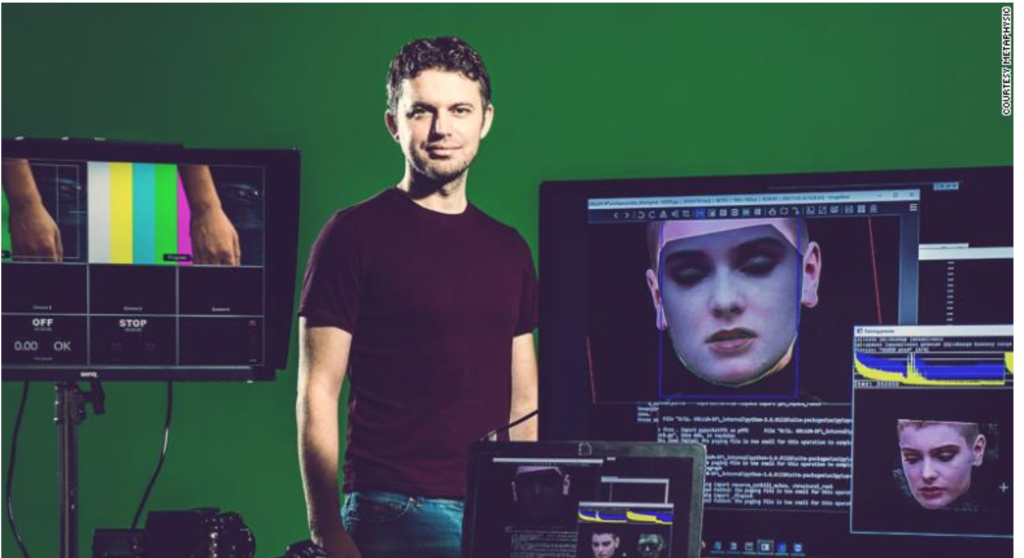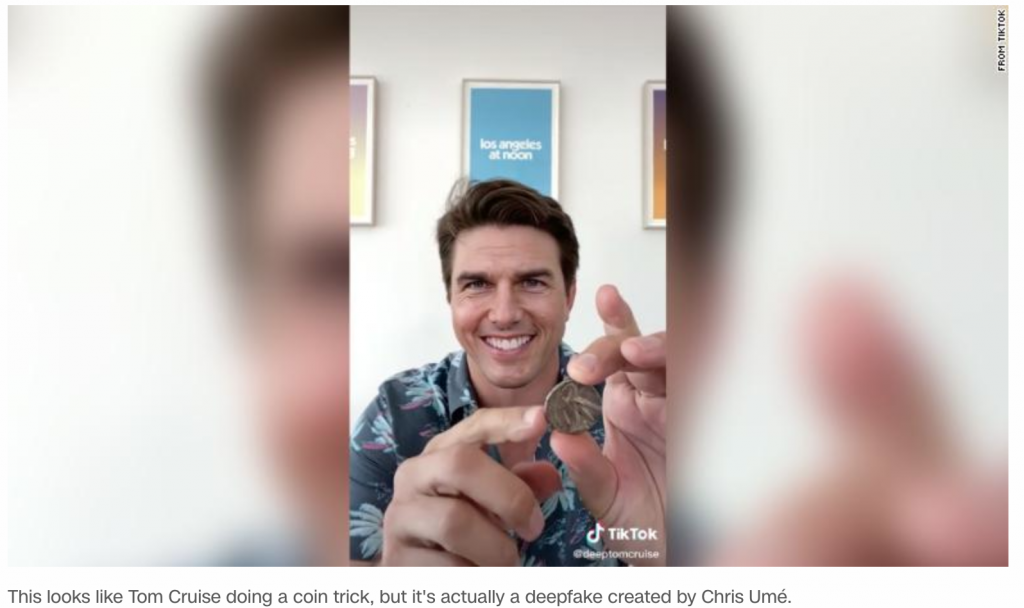
Chris Ume, a co-founder of Metaphysic, sees a bright future for the use of deepfakes in entertainment. (Source: Metaphysic)
Spread of Deepfakes Poses Array of Issues, from Ethics to Uses of Copyrighted Images
Over the last decade, deepfakes have permeated the internet. These digitally manipulated pictures or videos of famous people show them doing porn scenes or magic tricks—like a popular deepfake of Tom Cruise on TikTok.
For better or worse, deepfakes are going to become more common. In fact, the founders of a company called Metaphysic plan to make lots of money off of creating them.
Rachel Metz, a cnn.com contributor, broke down Metaphysic’s plan for the near future. Here is how the Cruise videos became so effective.
“Earlier this year, videos of Tom Cruise started popping up on TikTok of the actor doing some surprisingly un-Tom-Cruise-like stuff: goofing around in an upscale men’s clothing store; showing off a coin trick; growling playfully during a short rendition of Dave Matthews Band’s ‘Crash Into Me.’ In one video, he bites into a lollipop and is amazed to find gum in the center. ‘Mmmmm,’ he says to the camera. ‘That is incredible. How come nobody ever told me there’s bubblegum? Incredible!’

It would be fun if it really was Cruise. In truth, it was an actor named Miles Fisher. This ersatz Cruise was so popular, racking up tens of millions of views on TikTok, that it inspired Umé to join up with others to launch a company called Metaphysic in June. It uses the same deepfake technology to make otherwise impossible ads and restore old film.
Meanwhile, on TikTok, the “deeptomcruise” account has added deepfakes of other celebrities, including, a video of singer Mariah Carey in late July. Clad in black leather while sitting on a motorcycle, she dons a black helmet with cat ears.
“Bet you never thought you’d see this, huh?” she says with a smile, before peeling out of a parking lot.
Dangers of Deepfakes
The idea of using AI to manipulate pictures is one thing. The idea of using AI to manipulate a group of voters is something else entirely. And it is a very real danger for all of us in this great republic.
Much attention has been placed on the potential for using deepfakes for nefarious purposes, and for good reason. The first-known examples of deepfake videos, posted to Reddit in 2017, featured celebrities’ faces swapped with those of porn stars. Since then, technology has often been used for creating non-consensual pornography. Lawmakers have also warned that deepfakes could be used to mislead the American public.
Metaphysics Takes Off
“The technology is moving forward, whether anybody likes it, really,” Metaphysic cofounder Tom Graham, a tech entrepreneur who’s based in London, told CNN Business.
The company’s goal, he said, is to “really, really focus on trying to develop our product in a way” that avoids adding to the harmful deepfakes already being created by others.
Chris Umé, who previously worked on the pilot episode of deepfake web series “Sassy Justice” (from the creators of “South Park”), thinks the technology’s future is actually bright. “It’s a future where you have more freedom and more creative possibilities,” he said.
The company is international in its contacts and its actual office locations. Umé is based in Bangkok, and his cofounders at Metaphysic — Umé’s brother, Kevin, who’s in Belgium, and Graham in London. Their efforts are paying off as investors flock to the company.
For the Cruise videos that Umé made, he said he first spent about two and a half months just training an AI model on videos and images of the Hollywood star, trying to capture him from as many angles and in as many lighting conditions as possible.
Deepfakes are corrupting reality. When people go to sci-fi movies, they know they’re seeing a suspension of reality. But when they see Cruise biting a lollipop, it isn’t clear as to whether it’s real or not.
read more at cnn.com







Leave A Comment